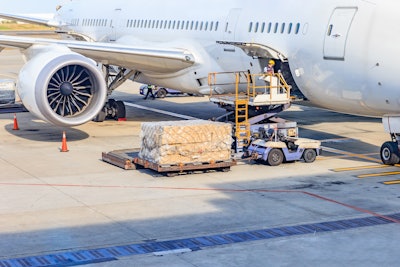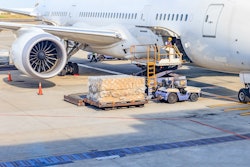
An international cold chain shipment seems simple, right? A package leaves its origination, arrives at its destination a few days later. With specialized packaging, everything should turn out ok.
Actually, that shipment includes a series of handoffs – courier pickup, airline transport, customs, ground transfer, delivery – all of which offer a window that may risk a delay or completely ruin a shipment.
Each new moment could mean sublimated dry ice; missing permits at customs; flight delays. And unlike a normal package delay, cold chain shipments are usually high stakes: a $300,000 sample destroyed can result in a clinical trial delay or a patient left without treatment.
Logistics partners need to be aware of the tension that comes with international cold chain shipping. What seems simple entails a complex sequence of events that a client should never need to think about once it leaves their hands.
Pre-clearance is critical
More often than not, if an international cold chain shipment experiences a delay, it will be at customs. And it usually involves the complicated paperwork each country requires.
No matter the shipment – everything from clinical trial samples to clothing to artwork – each requires a different set of rules from the governing country agencies. If a single object is misclassified or a permit is missing, the entire shipment is at risk.
As such, for a guaranteed successful shipment, pre-clearance is not an option, rather a must.
When preparing a shipment, verify your permits, early as some can take weeks to gather, and ensure you have complete documentation. Work with clients to understand what each shipment contains and which agency you need clearance from – is it human-derived and subject to CDC oversight? A drug under FDA control?
Ultimately, customs is the biggest risk. Invest the time and expertise upfront to get it right, and get the best chance for smooth sailing ahead.
Don’t underestimate the importance of consistent temperatures
In most types of freight, we worry the most about time – will the shipment arrive on time? In cold chain shipping, that simply isn’t the case – it’s the consistency of the temperature.
Having a true understanding of the product and offering a variety of options becomes crucial to ensuring a successful delivery.
In life sciences, vaccines that hit above 8°C may lose efficacy. In food distribution, ice cream that melts and refreezes can become a health hazard. Even artwork or cosmetics can suffer permanent quality damage from shifts in temperature.
Modern supply chain partners are investing in the next-generation of cold chain solutions. Traditional dry ice remains the go-to for ultra-cold biologics, enzymes, or frozen cells at a relatively low upfront cost. But it comes with trade-offs: hazardous material restrictions, sublimation waste, and uneven temperature if not packed correctly.
Newly emerging are phase change materials (PCMs), a sustainable and precise alternative. PCMs absorb and release heat at predefined setpoints, holding steady even when external conditions continue to change. This offers a reusable, non-hazardous, and easier to manage option that is approved to cross international borders. For many industries, PCMs may provide reliability, regulatory ease, and long-term cost savings.
No matter the shipping material used, consistent temperatures are crucial in protecting the investment, safeguarding reputations, and maintaining trust.
Relationships matter more than maps
If you’re a shipping partner that makes regular trips to certain locations, it’s worth investing in your relationships in those destinations. Several healthcare companies, for example, have the same paths from lab to lab.
A trusted partner in the destination becomes an extension of you and the supply chain. By finding someone who understands the airport protocol, knows the customs staff, and understands the urgency of the shipment you ensure accuracy and efficiency time and time again.
Over time, these partnerships help create predictability, making a complex shipment look seamless and creating efficiencies along the way.
Technology has limits
While tracking platforms are critical, they can only tell you about a package's last scan. They cannot provide real-time troubleshooting when customs or a delay go awry.
That’s when human-oversight still rules.
The most reliable partners pair automation with people who can anticipate issues and know how to intervene when necessary. A logistics specialist can call the airline, rebook the cargo, and send a courier to replenish the dry ice before the shipment goes out of range.
Lessons learned
International cold chain shipping will never be simple. But it can feel simple to the client if its complexity is handled by seasoned partners. Here are a few lessons, after years in the industry:
● Don’t assume what airlines show on their website is what actually happens. Understand specific scenarios at each airport.
● Always have experts for your commodities and countries, customs protocol can change fast and it’s a tough job keeping up with each specification.
● Don’t treat all shipments the same – scale the service to the risk, not just the cost.
That’s the paradox of this business: the smoother it looks from the outside, the more coordination it requires behind the scenes.
















![Pros To Know 2026 [color]](https://img.sdcexec.com/mindful/acbm/workspaces/default/uploads/2025/08/prostoknow-2026-color.mduFvhpgMk.png?ar=16%3A9&auto=format%2Ccompress&bg=fff&fill-color=fff&fit=fill&h=135&q=70&w=240)



